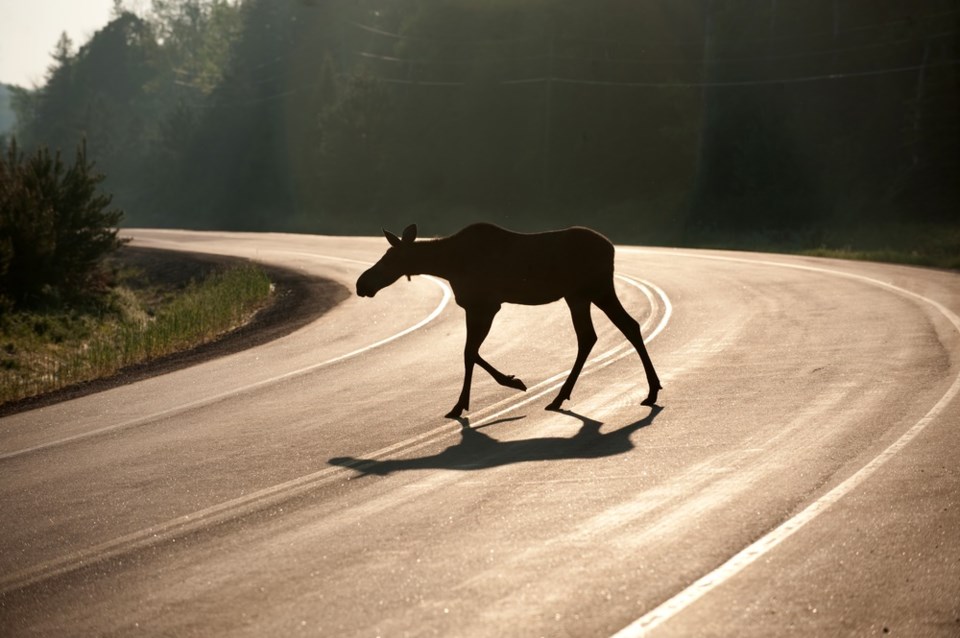One moose can do a lot of damage.
OPP report that on September 29, shortly after 11:30 p.m., they responded to four collisions involving a moose on Highway 69 in The Archipelago Township near Parry Sound.
A northbound motor vehicle pulled out to pass a transport and collided with a moose.
As the moose was laying lifeless on the highway, three additional vehicles ran over the moose. Two drivers and one passenger were injured and taken to hospital with non-life threatening injuries by the Parry Sound Emergency Medical Services.
Steps to help reduce the risk of a wildlife collision at night:
- Prepare yourself mentally. Think about and predict what you might do if an animal suddenly darted out in front of you or ran towards your vehicle.
- Reduce your speed. Speeding reduces the drivers' ability to steer away from objects on the roadway, it extends the distance required to stop and it increases the force of impact in the event of a collision.
- Watch for movement along the sides of the road and for shining eyes, which will be your headlights reflecting off the animal's eyes. NOTE: Moose are so tall that their eyes are normally above the beams of most vehicle headlights, so they are less likely to reflect the light.
What should you do if you hit a large animal?
- Pull off the road.
- Turn on hazard lights.
- Illuminate the animal with your headlights.
- You may choose to carefully approach the animal to determine if it is dead or injured. If it is injured, back off. A wounded animal can be very dangerous. Police can attend to dispatch wounded wildlife.
- You may choose to remove a dead animal from the road so that it does not present a hazard to other drivers.



